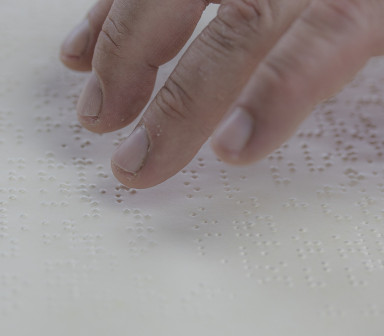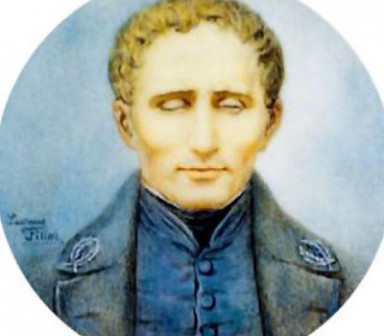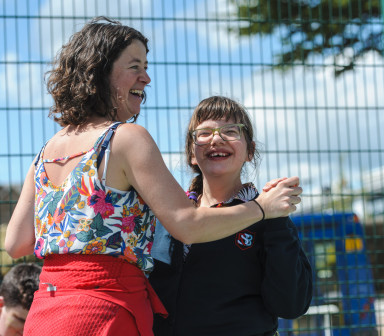The ability to read and write braille is still key to independence for many blind and partially sighted people all over the world.
As digital assistive technology develops more rapidly than ever, there are still strong benefits of being able to read and write in this revolutionary code for someone who has a visual impairment.

Braille allows blind and partially sighted people to learn spelling, grammar and punctuation and gain an understanding of how text is formatted on the page.
Individuals learn in different ways – some people may find it easier to take in information via audio while others prefer to read the written word in braille. But when it comes to really engaging with a text, particularly complicated printed material, the benefits of being able to read in braille outweigh audio formats as reading aids comprehension and retention of information. Braille use can allow someone to develop their skills for self-expression in written form.
The typically visual nature of maths and science teaching also means that learning symbols is made possible for blind and partially sighted people with braille’s maths notations. As such, it’s highly beneficial for learning in these areas too.
In maths and science symbols have braille equivalents and it is sometimes easier to access equations and complex problems reading from a printed braille text. Columns, tables and charts can all be adapted.
The ability to read and write braille provides the vital access to the written word that sighted people have. It can mean greater equality, enabling blind and partially sighted people to have the use, power, fluidity and enjoyment of the written word that sighted people have. Braille literacy promotes accessibility in society for people with a visual impairment.
On a personal basis, too, braille literacy can be vitally important for self-esteem, providing the ability to express oneself in written form and engage fully with written texts. It can promote greater independence in managing personal business, for example, receiving personal correspondence like bank statements in braille form.
The Scottish Braille Press produce documents and texts in various accessible formats for customers, including braille form.
Public spaces that include braille signage, for example braille on lift key pads or on doors, can really help people who read braille to maintain their independence when out and about. Braille labels on everyday items can also help to quickly identify what something is. Medicines are usually braille labelled and in supermarkets an increasing range of packaged foods have braille notation.
Digital assistive technology has further enabled braille use to become an efficient part of daily life for people with braille literacy. Braille notetakers and braille displays are a fast and efficient means of writing and transcribing braille. This braille technology requires knowledge of reading and writing braille in order to use it and get the maximum use out of it.
Studies have shown people with a visual impairment who have braille skills are more likely to be in employment than those who don’t use it.
Electronic braille notetakers (a BrailleNote) can be used to take down notes – whether in a lecture at college or university or in a meeting in the workplace. Some people also find braille notes useful to refer to when when giving a presentation or speech.
An accessible workplace should provide the means and facilities for blind and partially sighted employees to utilise braille, audio and assistive technologies in the ways that suit them best.
In October 2019, some of the pupils from the Royal Blind School shared their experiences of how braille has helped them in an assembly to mark National Braille Week. This is what they said:
Andrew Pettigrew, aged 17, said: “Braille means I can pursue my dream of becoming an author. It's amazing to think that this is all down to the work done by Louis Braille as a 15 year old boy.”
Joe Carberry, 18, explained: "Braille has really helped me. I was told when i was younger that I might not be able to sit any exams. Then I came to the Royal Blind School and I learnt braille. It helped me to pass my National 5s and I was able to prove the people who said I might not sit exams wrong.”
Connor, 17, explained: "Braille helps me to do all my work in class and it helps me to be able to access newspapers and banks statements through my BrailleNote Touch which is is a laptop with a braille display.”
Namarra, 17, said: "I learnt braille when I came to the Royal Blind School. I find it easier to write and read using it and it helps me to write my songs and music.”

